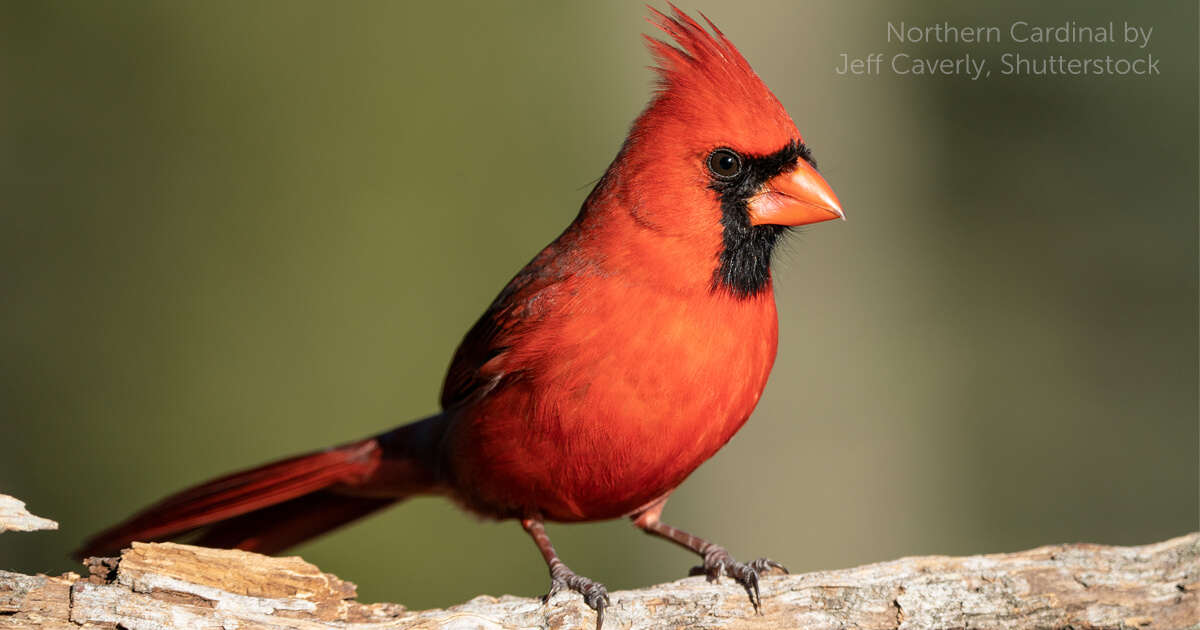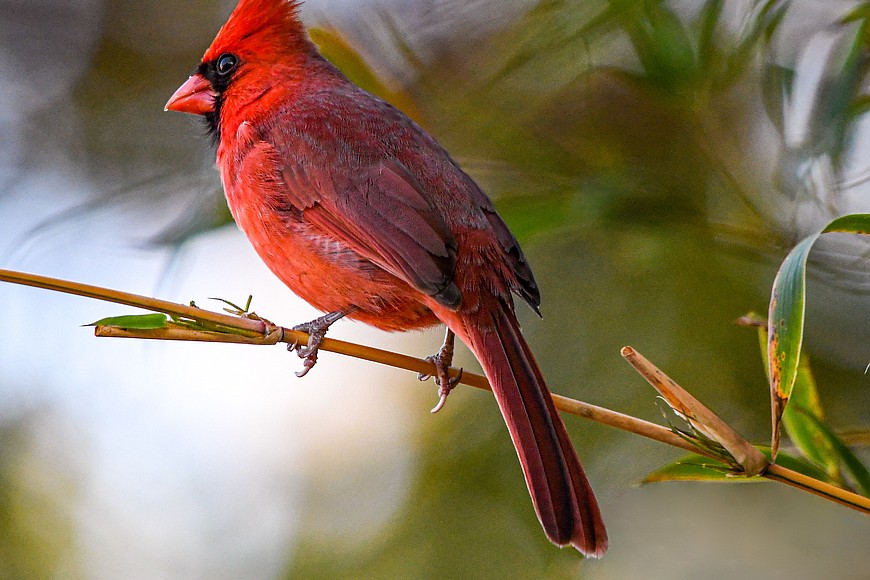Northern Cardinals are a beloved bird species in the United States, and they can be found throughout the entire year in their designated range. These birds are not only visually stunning but also display unique behaviors that make them a delight to observe. Attracting Northern Cardinals to your feeder is beneficial as they tend to spend more time at the feeder compared to other birds. They have a preference for sunflower seeds, especially black oil sunflower, as well as safflower seeds, peanut hearts, and mixed bird seeds. Northern Cardinals may also indulge in fruit, berries, and suet during the winter months. To successfully attract these beautiful birds, it is recommended to place the feeder near cover and at a low height if possible. Water features and dense bushes are also enticing to them. By creating an inviting environment with the right type of feeders and proper placement, bird lovers can enjoy the presence of these popular birds in their own backyard.
1. Characteristics of Northern Cardinals
1.1 Physical Appearance
Northern Cardinals are known for their vibrant plumage and striking appearance. The male Northern Cardinal has a bright red body with a crest on its head, while the female has a more subdued coloration – mostly gray with a reddish tint on its wings, tail, and crest. Both male and female have a distinctive black mask around their eyes. These birds have a robust, medium-sized body with a strong beak that is cone-shaped. They measure about 8-9 inches in length.
1.2 Range and Habitat
Northern Cardinals are famous residents of the United States, particularly in the eastern and central parts of the country. They can be found from southern Canada all the way to Mexico and the Yucatan Peninsula. Within their range, they inhabit a variety of habitats including woodlands, gardens, parks, and shrubby areas. They have also adapted well to urban environments and can be seen in residential areas.
1.3 Year-round Residents
One of the fascinating aspects of Northern Cardinals is that they are year-round residents in their range. Unlike many other migratory birds, Northern Cardinals do not undertake long-distance migrations. They are perfectly suited to withstand the winter months, thanks to their ability to endure cold temperatures and find food sources such as berries, fruits, and seeds even in the barren season. This makes them a joy to observe at backyard feeders throughout the year.

2. Attracting Northern Cardinals
2.1 Benefits of Attracting Northern Cardinals
Attracting Northern Cardinals to your backyard feeder can be a rewarding experience. These birds are visually striking and their vibrant red plumage adds a splash of color to any garden or yard. Furthermore, Northern Cardinals tend to spend more time at feeders compared to other birds, giving birdwatchers plenty of opportunities to observe their behavior and enjoy their presence.
2.2 Preferred Bird Seeds
Northern Cardinals have certain preferences when it comes to bird seeds. They are particularly attracted to sunflower seeds, especially black oil sunflower, due to their high fat content. Other seeds that Northern Cardinals enjoy include safflower seeds and peanut hearts. Additionally, feeding them mixed bird seeds can also be a good option.
2.3 Other Foods That Northern Cardinals Eat
In addition to seeds, Northern Cardinals also have a varied diet. They are known to eat fruits and berries, especially during the winter months when other food sources are scarce. Offering fresh or dried fruit, such as apple slices or raisins, can be a great way to diversify their diet and attract them to your feeder.
2.4 Preferred Types of Feeders
Northern Cardinals have specific preferences when it comes to feeders. They prefer platform feeders, larger hopper feeders, and larger tube feeders with wide trays. These types of feeders provide enough space for the birds to perch comfortably and access the food. Additionally, Northern Cardinals are ground-feeders as well, so they will also feed on the fallen seeds on the ground below the feeders.
2.5 Placement of Feeders
To attract Northern Cardinals, it is important to consider the placement of your feeders. They prefer feeders that are near cover, such as trees or bushes, where they can quickly retreat to if they feel threatened. If possible, place the feeder at a low height to make it more accessible to the birds. Additionally, placing the feeder near water features, such as bird baths or fountains, can further enhance its attractiveness to Northern Cardinals.
2.6 Use of Nesting Shelves
Northern Cardinals may also use nesting shelves for breeding purposes. These open platforms provide a safe and secure place for them to build their nests. If you are interested in promoting their breeding success, consider installing nesting shelves in your yard or garden. Providing prime nesting locations can further encourage Northern Cardinals to frequent your property.

3. Common Problems in Attracting Northern Cardinals
3.1 Issues with Feeders
One common problem in attracting Northern Cardinals is the use of feeders with small perches. Northern Cardinals have larger bodies and prefer feeders that can accommodate their size. If the perches are too small, it may discourage them from visiting the feeder and limit their access to food.
3.2 Lack of Tray
Another issue that may arise is the lack of a tray or platform on the feeder. As mentioned earlier, Northern Cardinals prefer platform feeders or those with wide trays. These trays provide ample space for them to perch and access the seeds comfortably. Without a tray, it may be difficult for Northern Cardinals to feed and they may be less likely to visit the feeder.
3.3 Problems with Suet Feeders
Some bird enthusiasts use suet feeders to attract a variety of birds, including Northern Cardinals. However, certain suet feeders require hanging, which may not be ideal for Northern Cardinals. They prefer feeders that are at a lower height, closer to the ground. If your suet feeder is not easily accessible or at an appropriate height, it may deter Northern Cardinals from feeding.
3.4 Importance of Visibility and Safety
When attracting Northern Cardinals, it is important to place the feeder where it is visible from indoors. This allows birdwatchers to observe the birds without disturbing them. Additionally, creating a safe environment for the birds is crucial. Avoid placing feeders near areas with heavy foot traffic or where there may be potential threats such as neighborhood cats. Providing a safe feeding environment will encourage Northern Cardinals to visit regularly.

4. Creating an Ideal Environment for Northern Cardinals
4.1 Bird Baths
Northern Cardinals, like many other birds, enjoy bathing and keeping clean. Including a bird bath in your yard or garden can be an effective way to attract them. Make sure the bird bath is shallow enough for them to comfortably bathe in and filled with fresh water. Keep the water clean and change it regularly to maintain its attractiveness to Northern Cardinals.
4.2 Cover and Nesting Preferences
In order to create an ideal environment for Northern Cardinals, it is important to provide them with suitable cover and nesting options. They prefer thick low bushes and hedges that can offer protection from predators and harsh weather conditions. Planting native shrubs and bushes in your yard or garden can provide the perfect habitat for them to nest, rest, and seek shelter.
By understanding the characteristics of Northern Cardinals and making the necessary adjustments to your feeding setup and environment, you can attract these beautiful birds and enjoy their presence year-round. With their vibrant plumage and delightful songs, Northern Cardinals are a beloved addition to any backyard or garden. So set up your feeders, provide suitable food options, and create a welcoming environment to invite these stunning birds into your life.

Leave a Reply